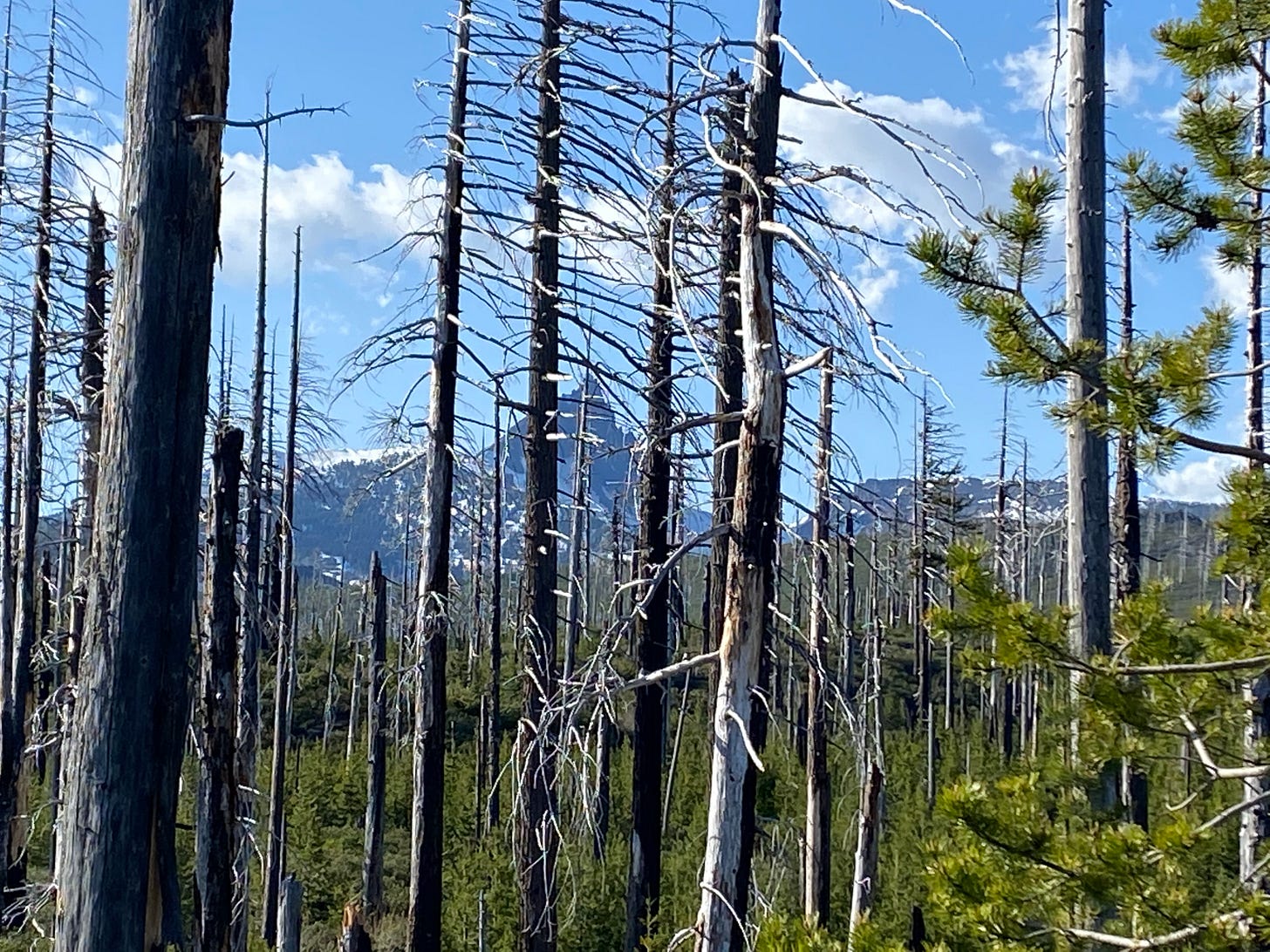Imagine this: Flames scorching through a forest, a sight that is both fierce and yet serene. You hear crackling, roaring…a fiery tune that for some ignites fear, and for others a sense of wonder. Natures finest work. As the sun begins to set over this forest in flames, the night sky captures the glow like a canvas painted in hues of flames. A painting that reminds you of natures delicate balance. Admist the choke of the flames comes a new beginning. A force that is both destructive and divine.
The history of wildfires in ecosystems runs deep, so deep, that some species of plants have evolved to have fire-dependent germination. What does this tell us? Well basically, we can deduce that wildfires have been a natural part of our ecosystems for long enough to act as a selective pressure for some evolutionary adaptations. There is even a fossil record of fire, and as you can imagine, this is in the form of fossilized charcoal! Evidence of the first wildfires dates back to 419 million years ago.1 So, how do they play a role in shaping our ecosystems and are what are the pros and cons of having wildfires?
Wildfires: Good or Bad?
Wildfires shape ecosystems by creating a mosaic of different ages and successional habitats, which promotes a diverse range of species by providing a range of habitats. Wildfires also support plant regeneration through the release of nutrients from dead plant matter. Aside from promoting the growth of new vegetation through the release of these nutrients, fires also clear vegetation allowing for both light and space for new seedlings to grow. Some plant species, namely giant sequoias, cannot reproduce without a fire event; they are quite literally born from fire.2 Wildfires also lend a hand in preventing the rapid spread of invasive species and disease outbreaks, promoting a better habitat for native species to flourish. However, there is another side to wildfires delicate balance. If they occur too frequently, or too intensely, they have the capacity to cause long-term damage to ecosystems.
Patterns of Wildfires
Wildfire patterns change across ecosystems because of differences in fuel availability, weather conditions, topography, and human activities. The type and arrangement of vegetation, as well as its moisture content, affect how easily a fire can spread and how intense it can become. Weather factors like temperature, wind, and humidity also play a role in determining fire behavior. Human activities, such as land use changes and fire suppression efforts, can also influence fire patterns. Each ecosystem has its own unique combination of these factors, resulting in different fire patterns and behaviors. Wildfires in grasslands are fueled mostly by dried grass and other vegetation and tend to spread quickly because of the nature of the dry fuel. Due to the inherently flammable characteristics of grass species, landscape fire activity has been found to be correlated with the flammability of grass at a continental scale.3 On the other hand, wildfires that occur in forests display slightly different characteristics that are influenced by a combination of factors including weather conditions, topography, fuel type and distribution, and wind direction.4
Management Implications
Wildfires can have a profound impact on communities and the environment, and effective management strategies are essential to mitigate their effects. Wildfires can cause significant damage to ecosystems, including soil erosion, loss of wildlife habitats, and damage to sensitive species. This can have long-term effects on the health and diversity of the natural environment. The availability of resources such as water, forage for livestock, and recreation opportunities are also impacted by wildfires. This can have significant implications for resource management and planning.
The financial costs of wildfires can also be substantial, including the cost of suppressing the fire, as well as the economic losses from damages to property and infrastructure. The most destructive wildfires disrupt the lives of residents, cause emotional trauma in the form of asset loss, and can strain relationships between different groups in the community that experienced different degrees of loss. Effective fire management strategies must take these factors into account and work to minimize the impacts of fires on communities and the environment.
Overall, managing the effects of wildfires requires a coordinated effort between various stakeholders, including government agencies, private organizations, and communities. By working together, we can ensure that the impacts of fires are minimized, and that our communities and the environment are protected for future generations.
Cressler III, W. L. 2001. Evidence of earliest known wildfires. Palaios, 16(2), 171-174.
Harvey, H. T., Shellhammer, H. S., and Stecker, R. E. 1980. Giant sequoia ecology: fire and reproduction (No. 12). US Department of the Interior, National Park Service.
Prior, L. D., Murphy, B. P., Williamson, G. J., Cochrane, M. A., Jolly, W. M., and Bowman, D. M. 2017. Does inherent flammability of grass and litter fuels contribute to continental patterns of landscape fire activity?. Journal of Biogeography, 44(6), 1225-1238.
Gisborne, H. T. 2004. Fundamentals of fire behavior. Fire Managementtoday, 15.



